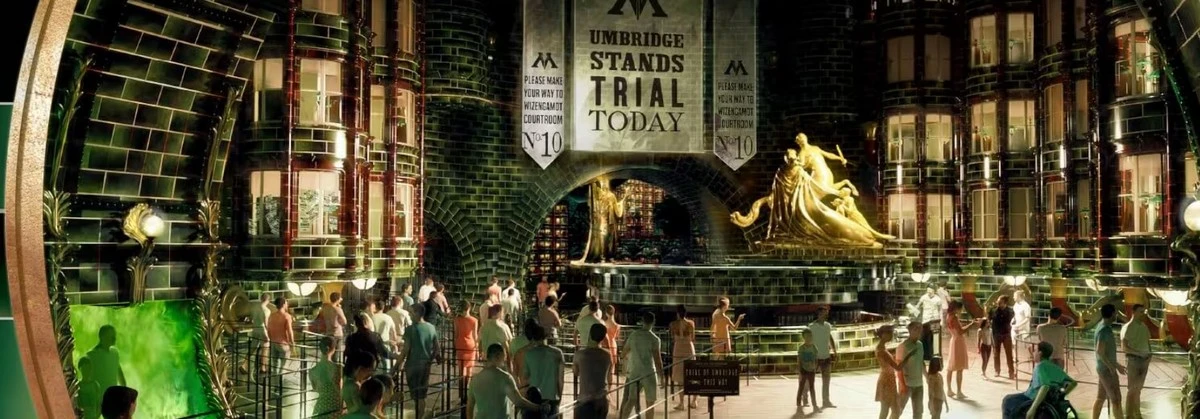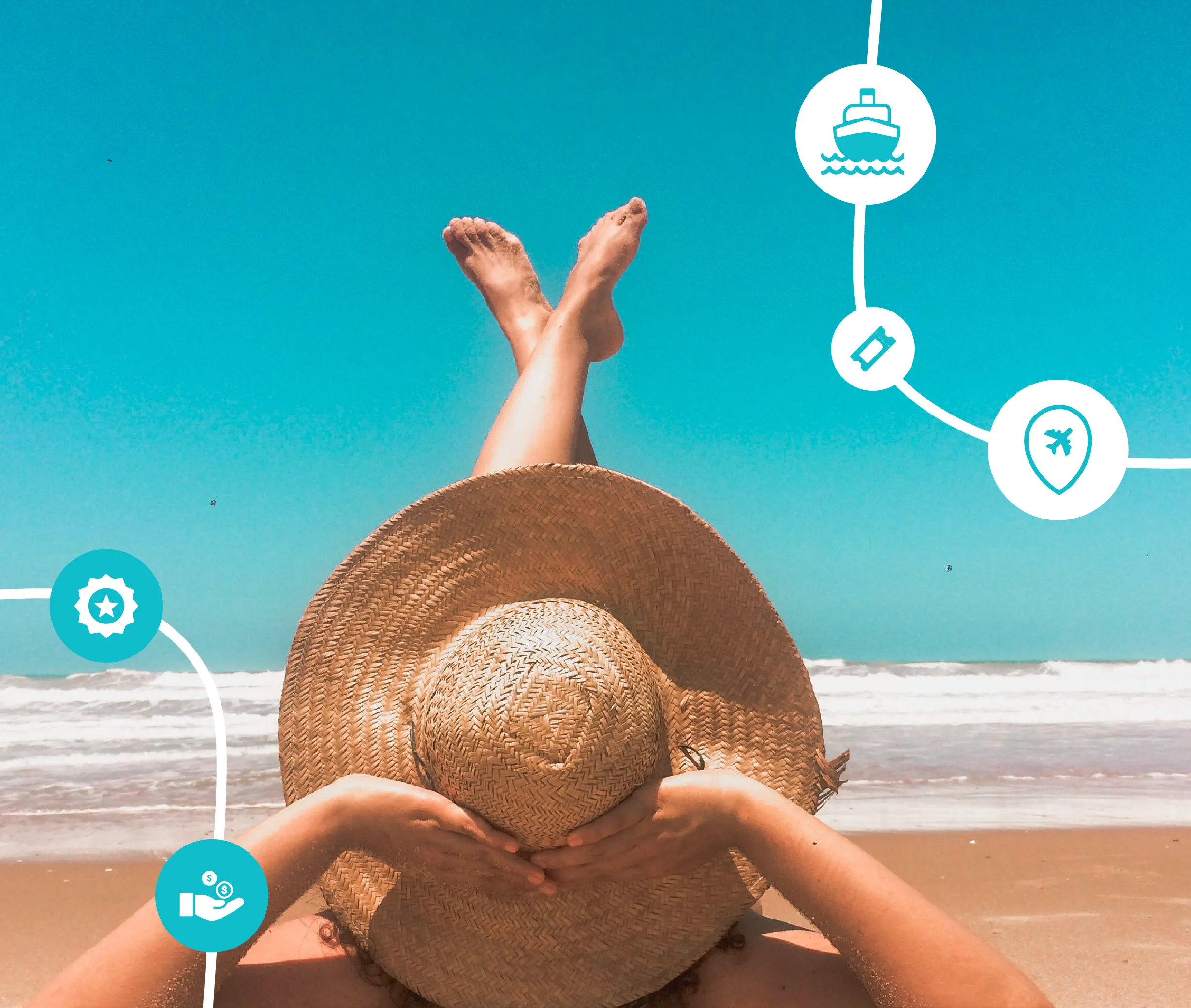Virtual Reality.
Just close your eyes and imagine this: you board a vehicle made for up to four people and put on a VR headset that looks very much like a X-Wing pilot helmet. Your train starts moving and, suddenly, the tunnels surrounding you begin changing. Yes, right in front of your eyes. Walls are gone, replaced by the vast darkness of space, with stars appearing one after another. At the start, there are just a few, but now there are hundreds of them! Millions!
You suddenly hear a loud noise and, looking up, you can see a Tie-Fighter zapping above you. Another one appears in the distance, with a Star Destroyer just behind it. They look so real you can almost touch them. Your vehicle twitches to the side, and it takes you a brief second to notice that you aren’t sitting down on a simple ride vehicle anymore.
You are inside the cockpit of a X-Wing, panels blinking in front of your eyes, radar alerting you that the empire has a lock on your ship. You can’t run away. It’s time to fight. Thrusters at full speed.
This, my friends, might be the future of theme parks.

Move over, 3D
Who here doesn’t remember the crazy era of 3D? My first encounter with 3D was in the early 90s, when even the Master System videogame console had those (horrible) janky 3D glasses that promised “unparalleled immersion in your games”. Decades later, it was time for TVs to start investing heavily on this technology. The end result was not very impressive, to say the least.
Big companies like Sony and LG suffered heavy losses after investing in 3D. Consumers were just not interested in it. The technology just wasn’t that mind blowing, you had to wear something on your head that could very well be uncomfortable and sometimes the effects just looked plain bad, with loss of textures and colors.
Thankfully, most companies gave up on 3D and invested millions on new technologies like 4K and even 8K resolution. Let’s be honest, most of us will take better visuals over an old gimmick at any time of the day.
Funny enough, 3D did see a major success in an area not many people know about: theme parks.
From old favorites like Muppets 3D to Avatar Flight of Passage, the three spatial dimensions are still a big success in both Walt Disney World and Universal Resort. This might be explained since the 3D effects there usually goes hand to hand with a practical effect, like Kermit the Frog doing something funny on screen just for a jet of water to hit you in the face; or when you are flying above Pandora and a fan positioned in your vehicle makes sure that you have that cold wind blowing your hair.
Theme Parks and 3D are still a good partnership. What if we take one step further, though? What if 3D isn’t just limited to what you see on your screen, but also to what happens right next to you? Even above you, behind you! More than that, we are not only talking about an illusion in front of you with a character popping out of the screen, but environments actually changing, teleporting guests to a brand new world.
Say hi to the power of Virtual Reality.
A World of Possibilities?
You may have heard that VR is getting bigger and bigger as the years go by. The technology is still in its early stages, I imagine, but sees major advancements in visuals and storytelling possibilities as time goes on. We mostly notice it being used in videogames for now, with big companies like Valve and Meta investing heavily on new products which are updated almost every year.
So, what exactly is VR, you might ask? In a virtual reality scenario, the environment around you becomes entirely digitized. You put on a physical headset and embark on a fictional reality created by the system. Sounds like the Matrix, huh? Honestly, it isn’t that much different from it. You can be sitting down in the middle of Times Square, and at the moment you put on the 3D headset, the vista around you can change to anything from a long lost city in the depths of the ocean to the unexplored surface of Mars.
Another fun technology that is also in its early stages is known as AR, or Augmented Reality. AR uses a real-world setting instead of creating an entirely digital scenario like in VR, but it can still create fictional scenes. Let’s say you decide to sit down in the middle of Times Square and put on AR glasses. You will still see the real Times Square, but now a weird alien can pop up next to you, or an angry giant monkey can appear climbing one of the nearby buildings.
Augmented Reality is, in fact, already being used in theme parks at this very moment. Mario Kart: Bowser’s Challenge at Super Nintendo World lets users wear augmented reality’s visors so they can see different Mario characters driving near them. It’s a fun gimmick, and certainly a preview of what’s to come in the future.

Although AR doesn’t let you immerse completely in a brand new world, there are definitely advantages for using it instead of VR. First, it’s way less expensive to build a visor than an entire VR headset. It’s also way easier to do maintenance and replace a faulty visor. Oh, it’s also easier to convince a child to wear a simple visor than a full on headset.
Few people know this, but VR was also used in theme parks in the past. One of the most (in)famous examples was Kraken, the roller coaster at Sea World Orlando. Guests could choose to wear the VR headsets or not in 2017. If they opted to wear it, they could embark on a whole new dimension as their ride became a submarine that explored the depths of the ocean and came face to face with different monsters. That curious experience lasted about a year. Motion sickness was a common complaint, as most guests simply did not like that gimmick at all.
That is something very important to take into account: motion sickness is a common complaint when it comes to VR. While you are actually not moving in VR and the scenario around you isn’t real, the immersive nature tricks the human brain into thinking there is actually something there. This may cause discomfort and nausea, especially on such an intense ride like a roller coaster.
So, VR is expensive and it can cause motion sickness. Can it still be used in theme parks with disadvantages like that?
A World of Possibilities!
Yes! Well, I think so. One thing is certain: VR can’t be used in thrill rides, or even in rides where you are moving around like crazy. No roller coasters, no intense motion simulators and no drop towers. So, where else could it be a major success?
I will tell you what. I think VR can be the next evolution of 3D theaters. You know those awesome, but old, attractions like Muppets 3D and It’s Tough to be a Bug? Yeah, they are fun, but the gimmicks are a little old at this point. What if, however, we could sit down, put on a VR headset and suddenly it’s not only the screen in front of us changing to trick us, but the entire building? Walls are gone. Kermit and Gonzo are actually walking around on stage and interacting with the audience. This opens a whole new level of possibilities for practical effects and jokes as well. The main problem here? Convincing your kid to wear one of those things on their heads. Yeah, maybe VR theaters wouldn’t work well after all.
VR could also be used in motion simulators that aren’t intense at all, like Avatar Flight of Passage. This is already an awesome ride that makes great use of 3D and great visuals. What if, however, you could see Pandora not only in front of you, but surrounding you completely? The bright blue sky above, giant dinosaur-like creatures behind you, a giant kraken swimming on the ocean just below you as you fly over this paradisiac landscape. Could be pretty fun, huh? With some kind of height requirement, young kids wouldn’t be able to ride those motion simulators, so we would make sure that everyone entering would be fine with using something on their heads.
Maybe VR could also be used in a few dark rides, as long as it doesn’t twitch and shake you around too much. Something like The Amazing Spider Man at Islands of Adventure could be an ideal example for it. Imagine embarking on a vehicle only for the walls to morph into a real New York, as you see Spidey jumping from building to building and then fighting big baddies like Dr. Octopus and Green Goblin? Something similar could be used in the Star Wars universe, as you flee from Stormtroopers or board an X-Wing to fight in space.
You know another good example where VR could be a big success? Interactive shooting galleries. Yes, rides like Men In Black: Alien Attack, Toy Story Mania and Buzz Lightyear’s Space Ranger Spin could be perfect for it. Those are already some of the more videogamey rides out there, so creating a new one from scratch using VR shouldn’t be a problem. You sit down, grab your fake gun and just shoot enemies in a complete virtual scenario. Sure, animatronics are incredibly charming in rides like that, but a full on digital world could also create new possibilities for a shooting gallery, from boss enemies appearing to power ups you can collect by shooting at them.

We touched on an important subject above. VR creates an entirely virtual scenario, so it shouldn’t be overused. A brand new, blockbuster ride in a theme park that uses this technology? Sure, go for it. But we also love all the animatronics and, above all, we love seeing our family members right next to us also laughing and enjoying the ride. Let’s not put VR everywhere. Theme Parks should be about enjoying a good time with our loved ones, so let’s not digitize everything.
VR isn’t just about awesome rides, by the way. Virtual reality can be used to help several people with disabilities that just can’t visit Disney or Universal, or have a very hard time hopping on a plane to go there. Imagine how delightful it would be for someone in these conditions to put on a virtual headset and actually move around a perfect representation of Magic Kingdom? Even more so if there is someone on the other side connected to this service - much like a Massive Online Multiplayer Game - to act as a guide, or even Mickey Mouse talking and interacting with that person and giving him a good laugh.
There are a lot of possibilities, to say the least.
A world still… far away?
There’s no way to truly know if this technology will be used in theme parks, or even if they are going to be a huge success or not. Major companies are still investing billions of dollars in it and improving it as time passes. It might well take decades until we are in a spot where it truly feels like we are living in a complete virtual world, and maybe Disney and Universal will wait until we reach that point. I wish I had a crystal ball.
What about you, do you think VR has a future in theme parks? What kind of attraction do you think would make use of this technology? Send us a message and share your thoughts with us! We can’t wait to hear from you. Until next time!





